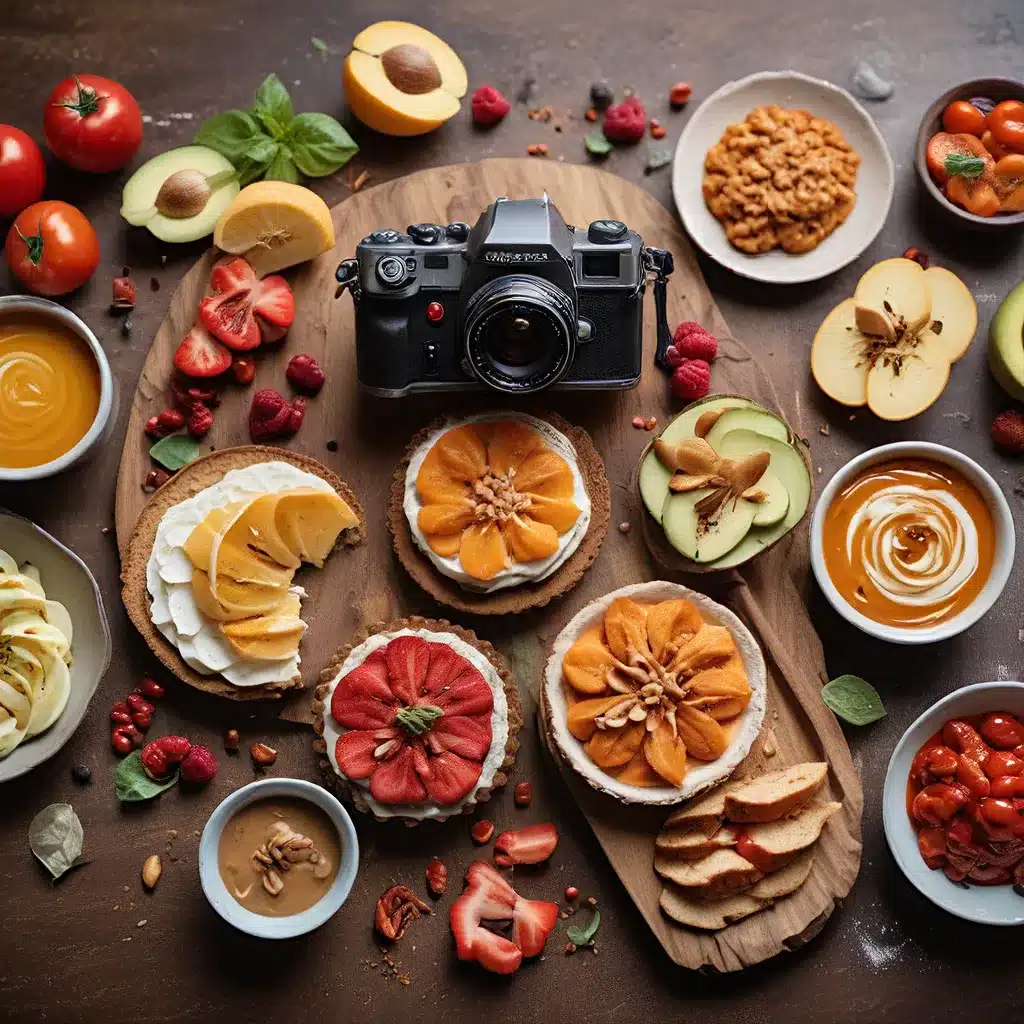
Discovering the Delectable World of Food Photography
As a photographer, I’ve always been drawn to the vibrant, ever-changing landscapes that surround us. From sweeping vistas to bustling cityscapes, my lens has captured the beauty of the world in all its forms. But recently, I’ve found myself captivated by a new and equally enthralling subject: food.
It all started a few weeks ago when I decided to shake up my photography classes at the Ulsan Support Center for Foreigners. Instead of our usual array of techniques, I wanted to dive deeper into the delectable world of food photography. After all, in a city like Ulsan, where culinary delights abound, mastering this genre is essential for any aspiring photographer.
As I soon discovered, food photography is not just about snapping a quick shot of your latest meal. It’s an art form that requires a keen eye, a steady hand, and a deep understanding of the interplay between light, composition, and subject.
The Basics: Positioning and Angles
We started our journey by focusing on the everyday meals that my students encounter. Think of this as Instagram 101 – exploring how to position food and identify the best angles to capture those mouthwatering shots.
“It’s all about finding the right perspective,” I explained to my eager students. “Sometimes, a simple adjustment of the camera can transform a mundane dish into a culinary masterpiece.”
We experimented with various techniques, from top-down shots that highlight the intricate details of a dish to side-angled perspectives that add depth and dimension. The results were spectacular, with my students producing stunning images that even pushed me to sharpen my own skills.
Staging and Styling: The Art of Food Presentation
As our classes progressed, the challenge became more complex. Last week’s session was particularly exciting, as my students brought in an assortment of snacks and drinks to photograph. I supplied them with the necessary tools – tripods, reflectors, and a variety of backgrounds – to assist with the staging and styling of their subjects.
Watching my students in action, experimenting with different setups, was incredibly rewarding. Their enthusiasm and creativity were palpable, as they worked to transform ordinary items into captivating, Instagram-worthy compositions.
One of the key lessons I imparted was the importance of attention to detail. “Every element in the frame matters,” I emphasized. “From the placement of the utensils to the angle of the napkin, it all contributes to the overall impact of the image.”
The Donut Dilemma: Capturing Deliciousness on Location
The highlight of our food photography unit, however, was the monthly photowalk that took us to Dona’s Donuts, a local café known for its irresistible treats. Emily, the owner, graciously allowed us to use her establishment as our studio, and her donuts – some of the best in Ulsan – became our delectable subjects.
The challenge here was twofold: capturing the essence of these donut delights without devouring them first. (A struggle I can assure you we all faced!)
The turnout for this class was unexpectedly high, filling Emily’s cozy café with a group of eager photographers. But my students were respectful and appreciative, fully immersing themselves in the experience of on-location shooting.
I extend my heartfelt gratitude to Emily and her staff for their hospitality and patience during our visit. Their support, along with the guidance of Skyler Burt, a leading expert in food photography who once lived in Ulsan, was invaluable for the success of this unit.
Transferable Skills: The Value of Food Photography
As our time in the food photography module came to an end, I had one student express frustration, questioning the time invested in simply taking pictures of food. I understood their concerns, but I was quick to explain the inherent value of these skills.
“The techniques you’ve honed in food photography – handling different lighting situations, using reflectors, staging scenes, paying attention to detail, and working in challenging environments – are all transferable to many other areas of photography,” I reassured them.
Indeed, as we transition to our next unit on portraiture, I’m confident that my students will recognize the foundational importance of what they’ve learned. After all, the ability to adapt to various shooting conditions and capture the essence of a subject, whether it’s a sweeping landscape or a sumptuous donut, is the hallmark of a truly skilled photographer.
Embracing the Art of Food Photography
As I reflect on our journey through the world of food photography, I’m filled with a deep sense of gratitude and excitement. Not only have I had the privilege of sharing my passion with a group of eager students, but I’ve also been able to deepen my own understanding and appreciation for this captivating genre.
From the delicate balance of light and shadow to the creative staging of each shot, food photography has opened my eyes to a new realm of artistic expression. And as I continue to experiment and explore, I’m constantly in awe of the beauty that can be found in the most ordinary of subjects.
So, whether you’re an aspiring food photographer or simply someone who loves to appreciate the visual delights of the culinary world, I encourage you to embrace the art of food photography. Capture those mouthwatering shots, play with different angles and props, and most importantly, don’t be afraid to get a little creative.
After all, as I learned from my students, the journey of food photography is just as sweet as the donuts we set out to capture.

